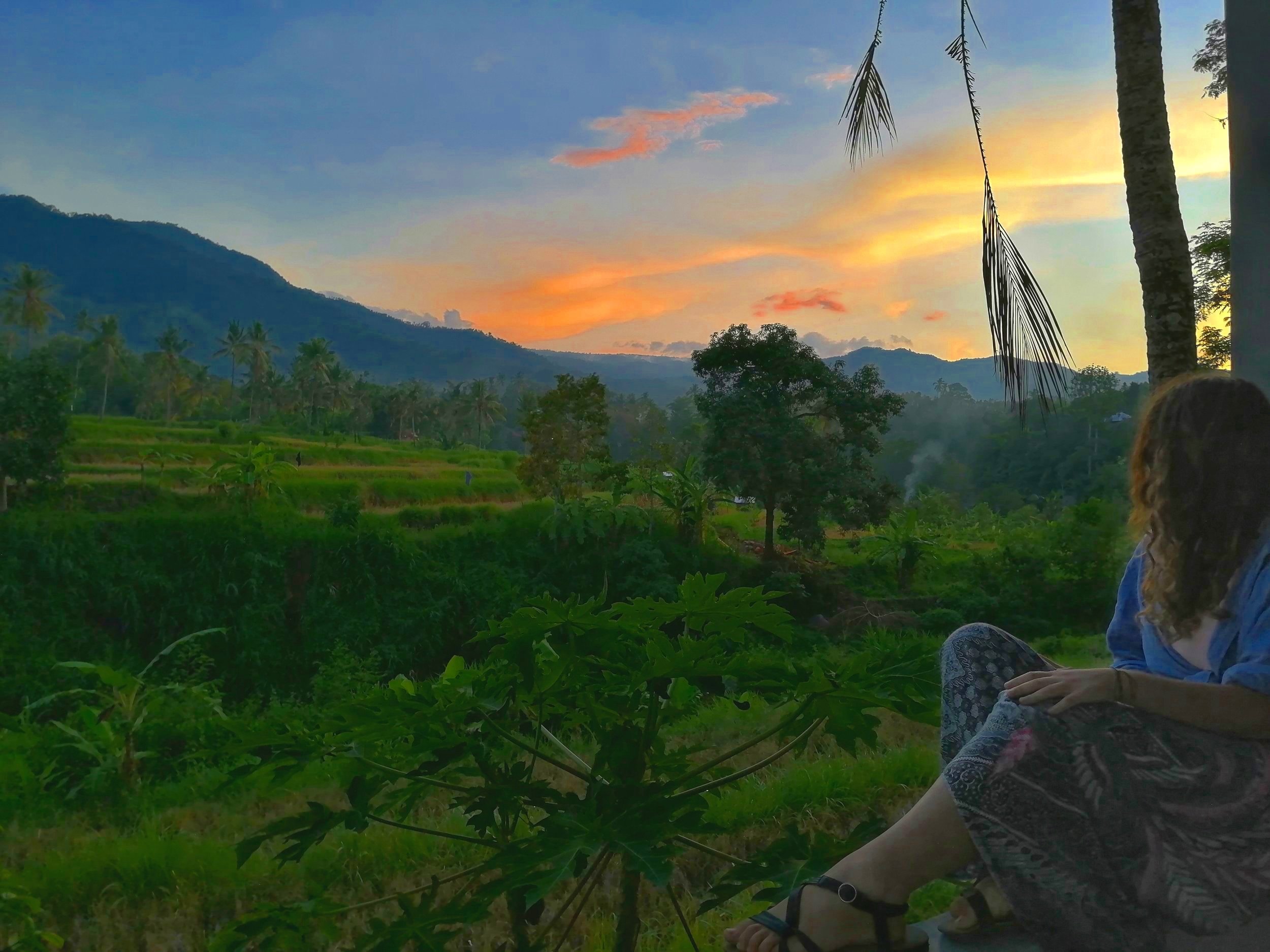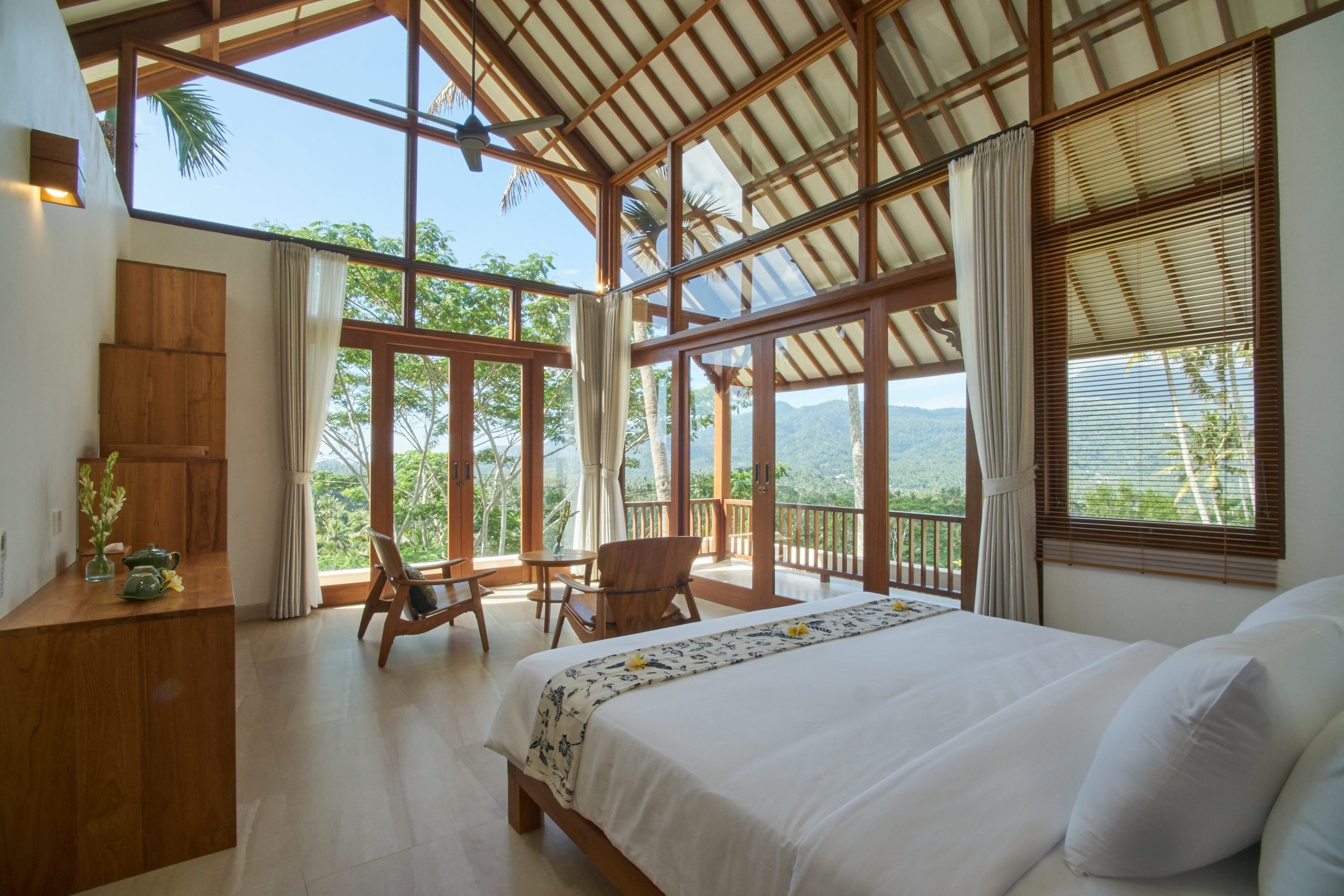5 hidden gems in Bali · Getting off the beaten track
TABLE OF CONTENTS
In the last decade, Bali became a very popular destination among backpackers and honeymooners from all over the world, reaching 6.3 million tourists in 2019.
Despite the tropical climate, lush nature and rich culture, Bali can be overwhelming if you visit the most popular locations. Most of the tourists, only explore the famous areas of Canggu and Ubud, forgetting to venture into the rest of the island. The best way to dive deeper into the Balinese traditions and find incredible viewpoints is to drive with a scooter and explore North and East Bali. Mass tourism didn’t develop in these areas, leaving space for Hindu rituals and untouched nature.
SUDAJI
Tegalalang might immediately come to mind when you think about Balinese rice fields. But, that’s not the only photogenic place on the island. Hidden in Northern Bali lies the picturesque Sudaji village, with countless rice fields and no tourists. Despite its natural beauty, it’s a hidden gem in Bali, and Hindu rituals are strongly practised in this area.
Where to stay in Sudaji?
I recommend staying in Lotus Guesthouse - if you want to wake up facing green rice fields, and enjoy fresh tropical fruits in the morning.
The guest house is run by a local family, that welcomes you with the warmest smile. They prepare every morning a delicious Balinese breakfast — with an omelette, Nasi goreng and a huge variety of tropical fruits. Here, I discovered my love for the white mango (a Balinese fruit with a blended aroma of mango and jackfruit).

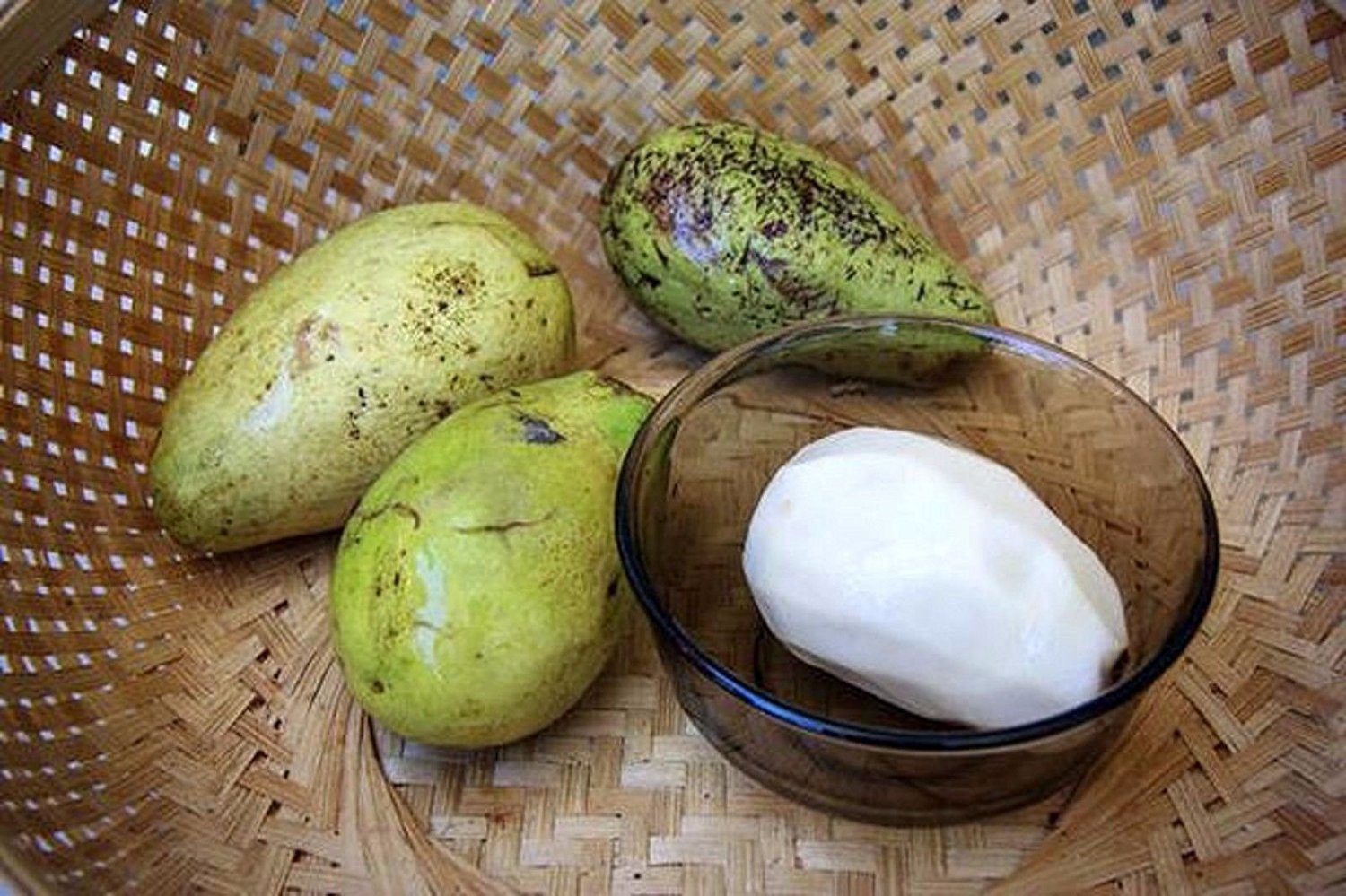
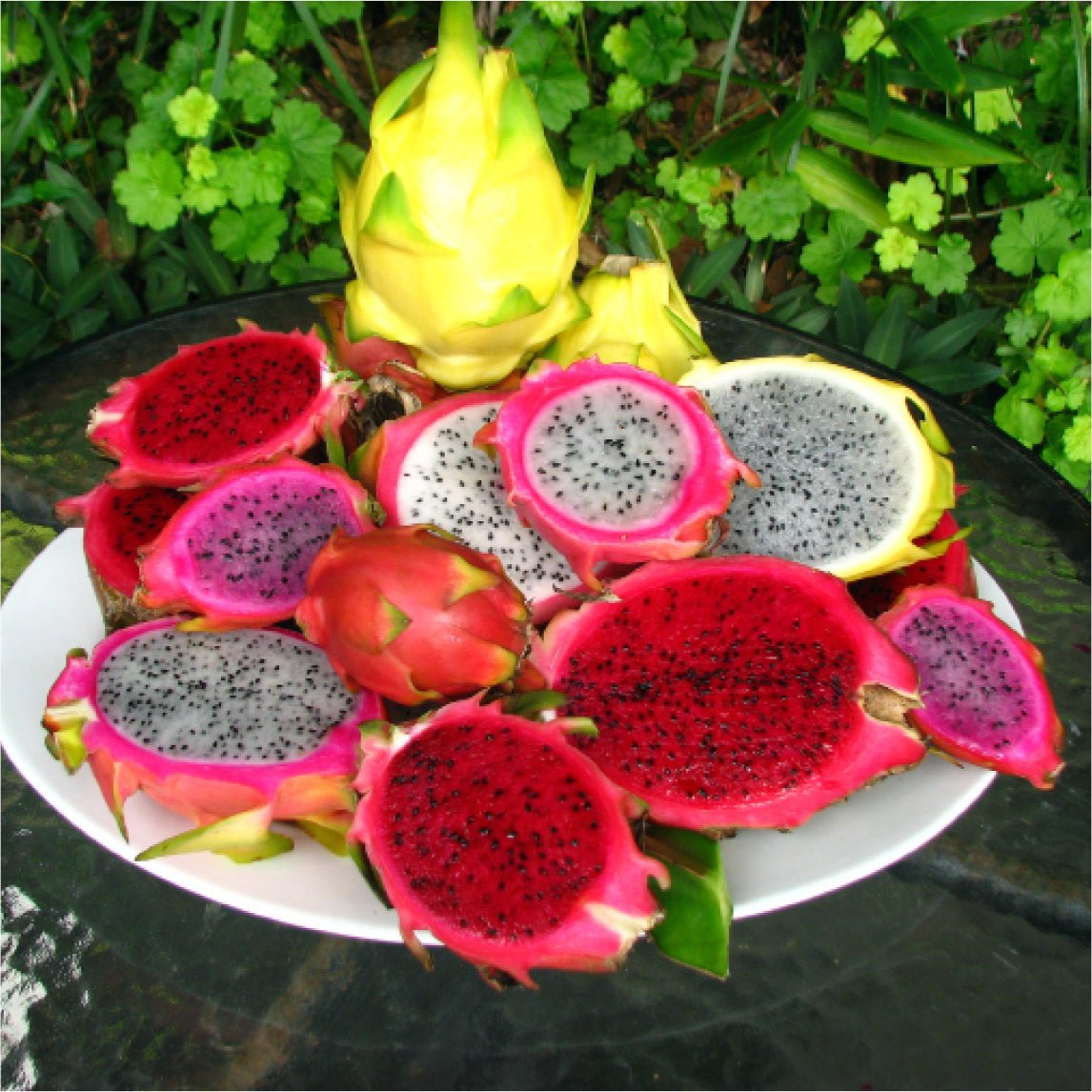
Witness the Balinese Hindu traditions
Every region in Bali has its own uniqueness. Every year, on the 24th of January, the residents of Sudaji organise a ceremony to celebrate prosperity and fertility in the community. On that occasion, one household is chosen to roast a pig, and that year happened to be the guest house where we were staying. The Balinese family lent us their traditional clothes to wear for the ceremony. I felt very grateful to witness this special Hindu ritual — the most enriching experience I had in Indonesia.
Activities near Sudaji
Visit Sekumpul Waterfalls
Sekumpul Waterfall is arguably Bali’s most spectacular cascades with a collection of 7 tall, misty waterfalls surrounded by lush vegetation. It’s a 30-minute hike to reach the base of the falls through a lush bamboo-forested valley. About a third of the way down, you will come across an awesome viewpoint of the falls that are dropping down over 80 meters, and you can stop here to take some photos. The waterfalls are 5 km from Sudaji and it takes 15 minutes with the scooter.
Coffee tasting in Sekumpul
At the beginning of the trail to the waterfalls, you will find a small bamboo kiosk where the locals do a coffee tasting experience for tourists. The rich volcanic soils of Bali and the ideal climate conditions, make this island perfect for cultivating different coffee berries. The most famous in Bali are:
Kopi Luwak — is the world's most expensive coffee, and it's made from civets poop. Or rather, it's made from coffee beans that are partially digested and then pooped out by the civet, a catlike creature. It contains many antioxidants and benefits that decrease the risk of liver cancer and diabetes.
Kintamani Coffee — Bali Kintamani coffee has a taste that is very different from other coffees in Indonesia. There is a fresh sour taste, that reminds you of citrus fruits, but does not leave an aftertaste in the mouth. The Kintamani coffee plantations grow at an altitude of about 1500 meters above sea level, between the volcanoes of Mt Batukaru and Mt Agung.
Wamena Coffee — has a unique taste, such as a chocolate aroma that combines with a medium-sour taste. This type of arabica coffee is grown at an altitude of 2,000 meters above sea level.
You can find different coffee tasting experiences, all around the Balinese Island.
Relax in the Blue Lagoon
The Blue Lagoon is perhaps the biggest draw in Sambangan Secret Garden, thanks to its incredible natural beauty. With a pool of strikingly blue water enveloped by high rock faces, the lagoon is a wonderfully picturesque swimming spot that’s reminiscent of a scene from a fairy tale. At the centre of the lagoon, there’s a small waterfall that is fed by a river hiding in the cavern behind.
The lagoon is 25 km from Sudaji, 50 minutes with the scooter, and it’s the perfect place to refresh after a long hiking day.
2. SIDEMEN
If you want an authentic experience in Balinese daily life — Sidemen is the perfect place. Located in East Bali, it’s often described as Ubud 20 years ago. The village is incredibly laid back. You can see the Balinese culture preserved, locals working in the rice fields, wearing traditional clothing. Sidemen is not westernised as Southern Bali, so you won’t come across tourists, or hipster cafés in the area. Enjoy the incredible rice terrace view and Mount Agung's active volcano in the background. I highly recommend it, if you want to discover more about the local community and rice farming. You can easily find a local guide who’s more than happy to give you a personalised tour of the area, and explain to you the process of the rice paddies.
Where to stay in Sidemen?
Great Mountain Views Villa Resort
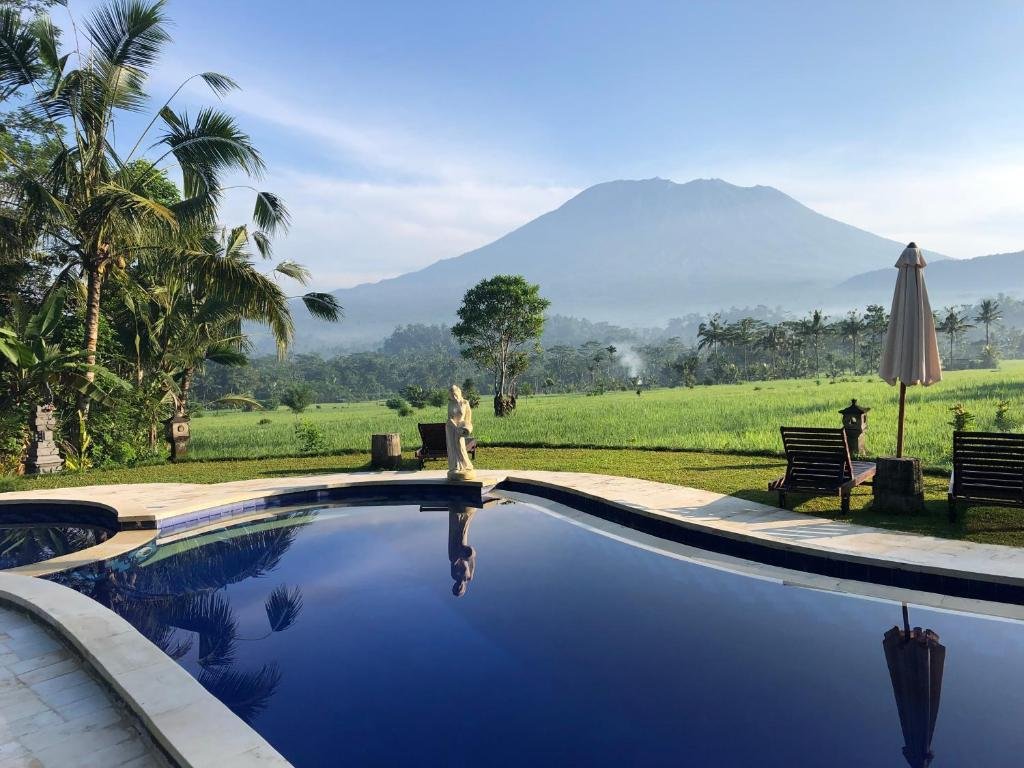
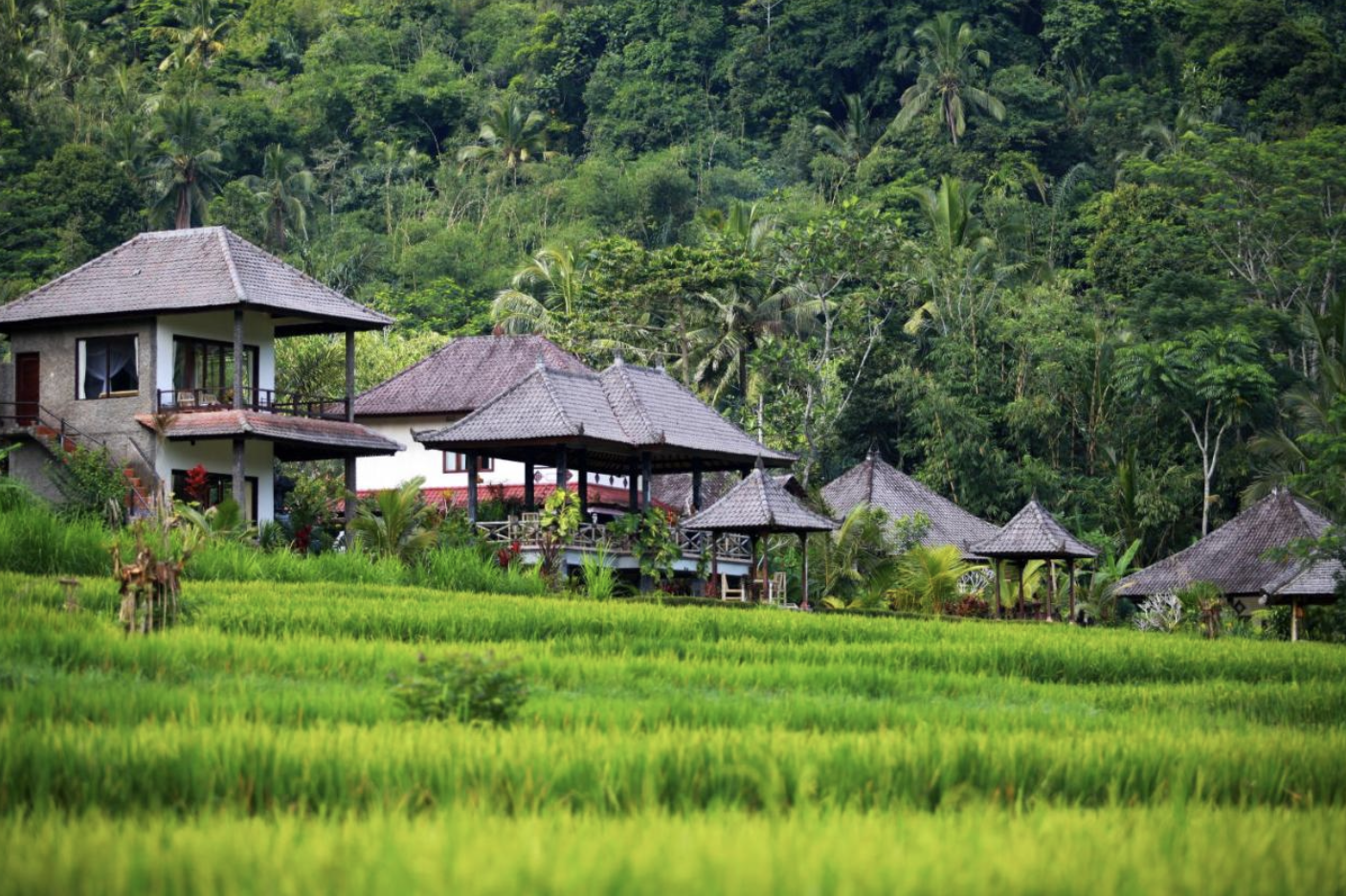
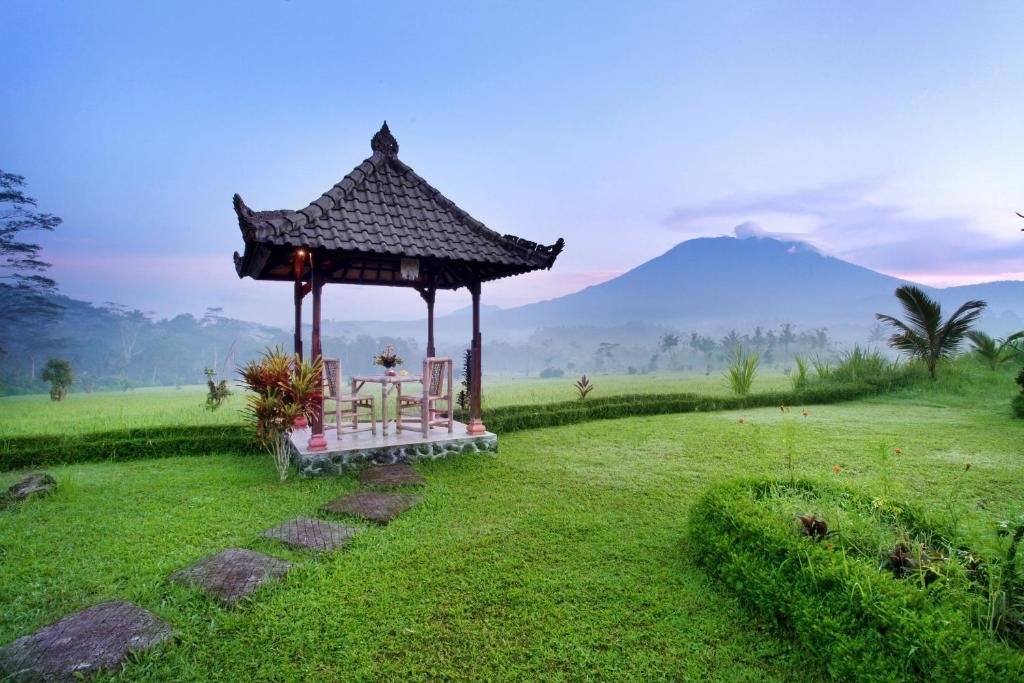
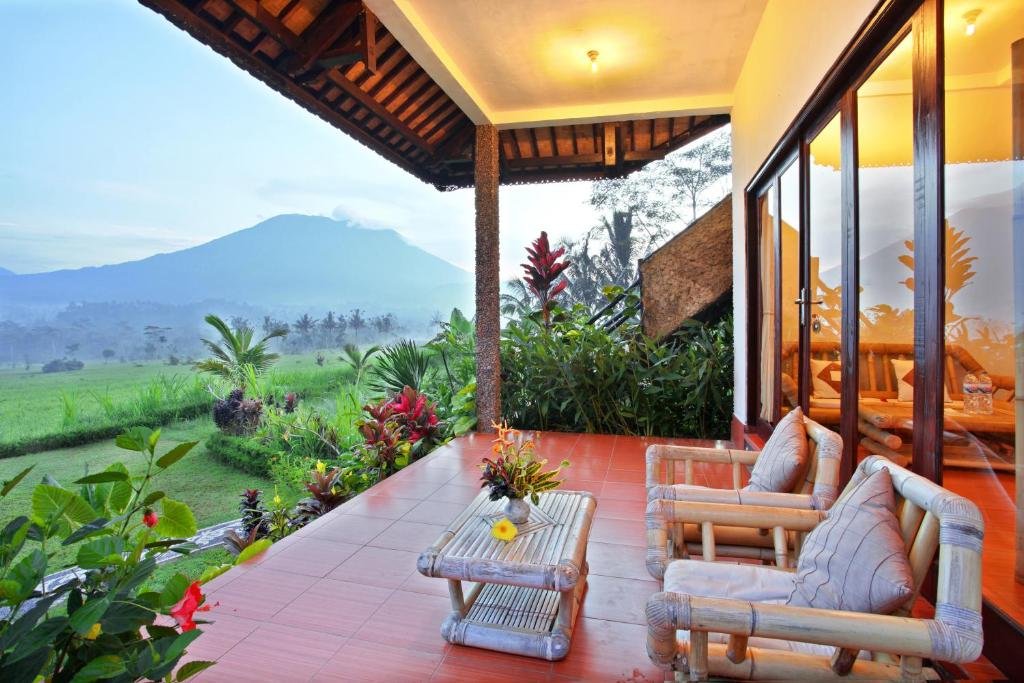
Great Mountain Views Villa Resort — is located amidst the green landscape of rice paddies, this Sidemen resort offers splendid views of Mount Agung, which is a 10-minute drive away. The resort has a spa, a restaurant and a complimentary breakfast. The spacious villas offer a living area and large windows with views of the surrounding nature, for a very affordable price.
Activities to do in Sidemen?
Agung Silver
In Sidemen there is a jewellery shop, where you can craft your own silver jewellery and take home the memory of Bali. The experienced locals teach you the process step by step — an art that they have handed down for generations.
Gembleng Waterfall
The waterfall is very close to Sidemen village, it takes 20 minutes by scooter to reach it — 7,5 km.
Air Terjun Gembleng is a piece of art, formed by nature. Its incredibly beautiful scenery, as well as the history of the place, instill a mystical vibe for those who visit. Enjoy the atmosphere and the clear water in the natural jacuzzi, while you relax surrounded by tropical forests and rice terraces.
On rare occasions, there are still religious ceremonies performed at Gembleng Waterfall. During these times the waterfall is closed to the public. This particular waterfall is a holy place and it was originally used by the Balinese people to carry out the tradition of melukat — the ritual for purifying the body - soul and mind. While visiting, keep in mind this is a holy place for Balinese people, so treat it with respect, especially when meeting locals. They are sharing their beautiful land with you after all.
To get to Gembleng Falls, you actually walk up to it, unlike most Bali waterfalls which you walk down to. There are around 60 stairs that will lead you right to the top. To get to the rock pools, you need to walk across a suspended wooden bridge and scramble over some rocks. The view at the end is 100% worth it. The natural infinity pool at the top, is where you’ll be able to capture the best shots, and of course, be sure to go for a swim to cool off in this freshwater paradise.
Visit Samsara Living
Samsara Living is a unique museum that offers educational and spiritual tourism in one place If you want to get an authentic Balinese cultural experience. Located in Jungutan village, 25 minutes by scooter from Sidemen (13 km). It’s free of charge, but you can make a donation if you feel like it. You will be given a welcome drink in the form of traditional herbal medicine, that tastes very sweet. You will be lent a traditional shawl to wear while walking around the museum. The museum’s theme is the life cycle of the Balinese people. There are at least 14 series of Hindu ceremonies presented in the form of photographs, along with explanations.
The surrounding scenery is beautiful, and you can join different activities that the community offers, and feel the authenticity of Bali. The village is incredibly laid back — you can see the Balinese culture preserved, locals working in the rice fields, wearing traditional clothing.
3. LES
Les is a beautiful remote town that feels like the countryside of Japan. The village is located in the northern coast of Bali, a poor area devastated by a massive volcano eruption in 1963. The north coast of Bali is untouched by tourism and the locals continue to preserve the Balinese traditions. Villages still practice subsistence agriculture and fishing. The village is located three hours drive north of Denpasar through a winding mountain road which brings you past the scenic Kintamani town atop the volcano range. It is known for its scenic waterfall, jungle trekking and diving at nearby Tulamben, which has the world class wreck USS Liberty.
Where to stay?
Pinggan caldera
Even though the accommodation is located one hour from Les, I recommend to enjoy the views from Pinggan village. You don’t have to hike in the middle of the night to Mt. Batur to experience the spectacular sunrise. From Pinggan, you can enjoy equally amazing views from the comfort of your bed. Located in the Kintamani region northeast on the island, at an altitude of 1300 meters, Pinggan caldera is a unique sight that overlooks the active volcano.
The accommodation offers a restaurant, newly renovated rooms, and a delicious complementary breakfast — all for a very affordable price. Don’t forget to refresh in the panoramic pool, and enjoy your morning yoga session, facing the majestic Mt. Batur.
Activities
Visit Les waterfall
Les Waterfall for local people is more familiar with the name of Yeh Mempeh Waterfall — which means ‘the water that flies’. Its height is around 30 meters, with very clear freshwater. The number of tourists visiting the Yeh Mempeh waterfall is lower if you compare it to Sekumpul, or other waterfalls in central Bali.
To reach ‘Les waterfall’ from the car park, you have to walk a pathway about 15 minutes, passing through bushes and lush green trees. Most of the paths you take are in the form of cemented roads with some trails next to a shallow river. Once arrived, you are able to soak in the waterfall, if you want to refresh in the crystal clear water, but be aware that is freezing cold.
4. LAHANGAN SWEET VIEWPOINT
Following a short path, you’ll find the viewpoint atop a lush mountain ridge in the east of the island. It’s definitely the best place to check out the scenic Mt Agung volcano and the northern coastline. On a clear day, you can also spot Mt Rinjani on Lombok island. Viewing Mount Agung at sunrise or sunset, is one of the best things to do in Bali, to witness the light creep over the mountain and provide you with spectacularly lit views of the rice fields and the valley below. Climb up to the tree platform for the best perspective.
How to reach it
Type in Lahangan Sweet into google maps and it will take you to the bottom of the hill, across from a local warung. Follow the small wood sign that will point you in the right direction.
Here, you can park your scooter and make the rest of the journey on foot up the steep road. It will take you an additional 10 minutes to walk up to the entrance through mud. Beware, it can be slippery so wear the right shoes! Upon arriving, you’ll see a small wooden shack that acts as the ticket office and a bamboo entrance gateway. Locals get a free entry to the viewpoint, and foreigners will have to purchase an entry ticket for 20,000 IDR at the ticket office. There are no official opening hours, so you can visit anytime and spend as much time here as you want!
Where to stay?
Palmterrace
Palmterrace is a small luxury resort with 4 cottages & 2 master houses, located at the village of Abang, in East Bali. Palmterrace is one of the most beautiful and unspoilt areas on this island, far from the touristic crowds of Kuta, and only 2 hours from the airport. From the comfort of your bed you can enjoy the sunrise across the mountains. Breath the unspoiled mountain air from your cottage, overlooking the scenic mountains and the palm trees valley view.
Yoga at sunset
One of the activities that the resort offers, is a private yoga session with an experienced instructor. You can choose when you would like to have your yoga lesson, I recommend during sunset, so you can relax admiring the scenic views with the sun setting.
5. WEST BALI NATIONAL PARK
Where to stay?
Umma Bali Menjangan Retreat
Set in a lush rice field overlooking the mountain of Sumberkima village, Umma Bali Menjangan, offers a unique experience immersed in the Balinese nature, inside a typical wooden house called “Lumbung” — traditionally used to store the rice after the harvest.
Umma Bali Menjangan is located 18 km form the entrance of West Bali National Park, and from the accommodation you can book different tours, such as diving to Menjangan Island, jungle trekking in the National Park, and a boat tour through the mangroves.
Activities to do in the National Park?
There are plenty of things to do in West Bali, even if it may be the least-visited location on the island, it has plenty of charm. Each part of Bali has a completely different vibe, and exploring West Bali is a full immersion into the authentic Indonesian lifestyle. Most areas in West Bali are home to villages, humble Indonesian warungs, and beaches with surfers and fisherman.
Surfing in Medewi Beach
Medewi Beach is the perfect place for beginners that want to get on a surf board and face their first waves. The area is a fishing community, with local surfers that get together every day for sunrise.
Visit Kurma Asih sea turtle conservation center
Kurma Asih — which means turtle carers, was founded in 1997, when a group of Balinese fishermen from the village of Perancak in West Bali, who had traditionally been turtle hunters, became aware of the endangered status of seas turtle population. Trained by the WWF in relocation and conservation methods, the Kurma Asih group began an active protection and education program involving villages along the 50 kilometer Jembrana beach in West Bali.
Free the turtles in the Ocean
Some turtles lay the eggs from October until December, others from March until April. The incubation period is 50 days — that’s when you are able to see some baby turtles hatching, and through the conservation center, you can free the turtles in the sea. It can be quite emotional, if you consider that only one in 1,000 turtles survive to adulthood, but an experience that I absolutely recommend!



